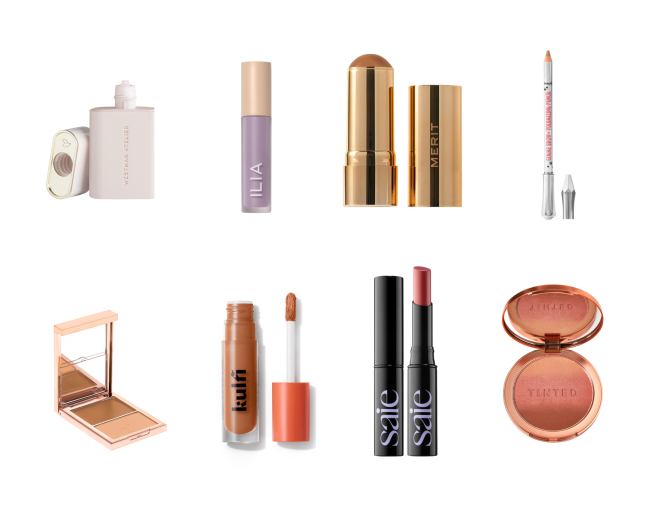Inside Authentic Brands’ Fleet of ChatGPT Smart Glasses
Next month, ChatGPT will go somewhere it has never gone before — the face — thanks to the February launch of a new range of audio-driven smart glasses called Nautica by Lucyd.
The device collection, which will ship in late January, brings OpenAI’s bot to a new fashion frontier through a partnership between Innovative Eyewear and Authentic Brands Group. That’s just the beginning. Soon, this licensing deal will usher in branded smart glasses for Eddie Bauer in March, with Reebok following at the end of the second quarter. Innovative’s Lucyd (pronounced “lucid”) platform, which powers its own in-house Lucyd collection of smart glasses, also fuels the ABG portfolio.
It’s reasonable to wonder whether the world needs more smart glasses, especially since demand for the category isn’t remotely clear. But Innovative and ABG are betting that their blend of fashion-led approach, affordable pricing and advanced functionality, tied to the buzzed-about tech that set off the current AI boom, will resonate with consumers.
Harrison Gross, chief executive officer of Innovative Eyewear, sees a parallel between smartwatches and smart glasses. “[Smartwatches are] delivering more functionality in essentially the same form factor, and roughly the same price point as a regular designer watch, and it’s easy to draw a line from that to smart eyewear that costs the same as regular glasses, but does more,” he told WWD.
Nautica’s “Spyglass” smart glasses
Courtesy photo
Unlike with the EssilorLuxottica-designed Ray-Ban by Meta, there are no cameras embedded in these devices. The Lucyd glasses are an audio-only affair that connect to smartphones via Bluetooth 5.2. The frames feature open-air speakers, with microphones controlled by physical buttons — so they’re not always on and listening. That helps contribute to the gadget’s longevity, with 12 hours of music and talk time per charge. That’s a lot of time for playing songs, listening to podcasts, talking on a call or interacting with a voice assistant.
In terms of baseline functionality, these devices invite comparisons to Amazon’s Echo Frames, except instead of Alexa, advanced commands — in this case, the ChatGPT functionality — go through Lucyd.
The concept of using wearables as an “on-ramp” into multiple AI systems is among the company’s extensive patent portfolio, which covers 109 patents and applications. It may sound complex, but in practice, it works fairly seamlessly. There’s a bit of setup to connect the bot, but after that, it feels fairly intuitive. A long press of the button conjures Siri or Google Assistant, and then a quick mention of “Lucyd” invokes OpenAI’s bot. In real-world use, the glasses moved between systems handily, conjuring Apple Maps directions, responding to an inquiry about how many miles there are between the earth and the moon (nearly 239,000 miles) and even writing a haiku from scratch.
Of course, none of that matters if people aren’t willing to wear the device. This is where practical utility meets fashion, and it’s the most critical juncture for all of the Lucyd models.
“Ours are really designed for people who wear prescription glasses all day or who wear sunglasses all day… [and] look the most like a regular pair of eyewear,” said Gross, “which is really important for consumer adoption of any smart eyewear product.”
Ironically, he believes that connected eyeglass makers have been rather myopic about fashion and offering sufficient options. “That’s been sorely missing from the smart eyewear market,” he continued. “Almost all the products were just designed for men, and there wasn’t any attention given to all the other segments of people that could use this product. That’s something that we really pay close attention to, that designer focus.”
Wayfarer frames are popular for tech makers because they can hide components more easily in their thicker, plasticky frames. According to Gross, his company came up with a different product design that allows for more flexibility, because they pack the electronics in the arms only, allowing the front, face-worn plate to be swapped.
“Surge,” like the other styles, can hold sunglass lenses as well as prescription lenses.
Courtesy photo
That’s a creative approach, though there are pros and cons to that. With lighter-weight front plates, this design can affect the balance of the glasses, shifting the weight back toward the arms. The left and right sides also each need to be charged, because they’re not connected.
However, this schematic allows Innovative to produce an expansive range of looks, far more than the limited selection of other smart glasses. Its in-house Lucyd brand offers 21 total styles, including metallic and titanium versions, as well as designs for women, people with wider faces and younger users. It even produces smart safety glasses for industrial environments.
Across ABG, 18 different glasses are on the way. Nautica alone will launch eight models. Eddie Bauer will release something of a capsule collection with four styles, and Reebok is currently slated for six.
Their success will likely dictate whether others will follow — possibly across the fashion industry at large, but certainly from ABG itself, as it holds a multi-year licensing agreement with Innovative Eyewear.





:quality(70)/cloudfront-eu-central-1.images.arcpublishing.com/businessoffashion/I3PAPGBJ6JC4LOEULC5DYYYIOQ.jpg)


